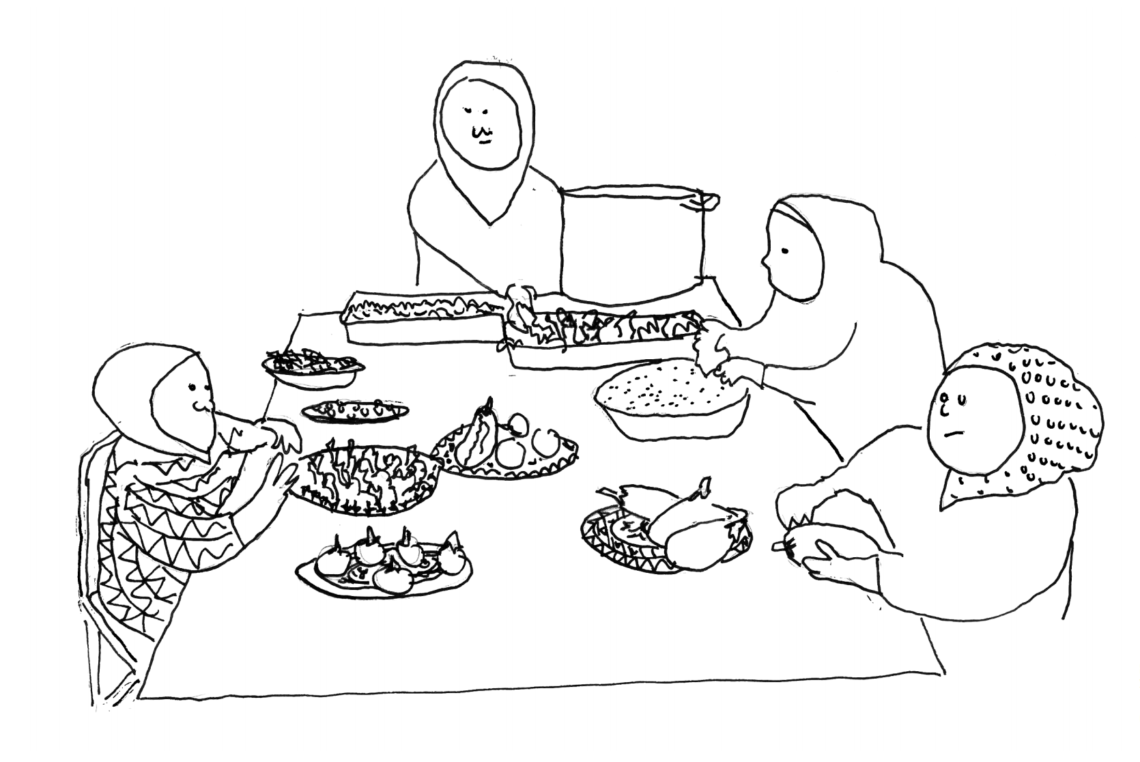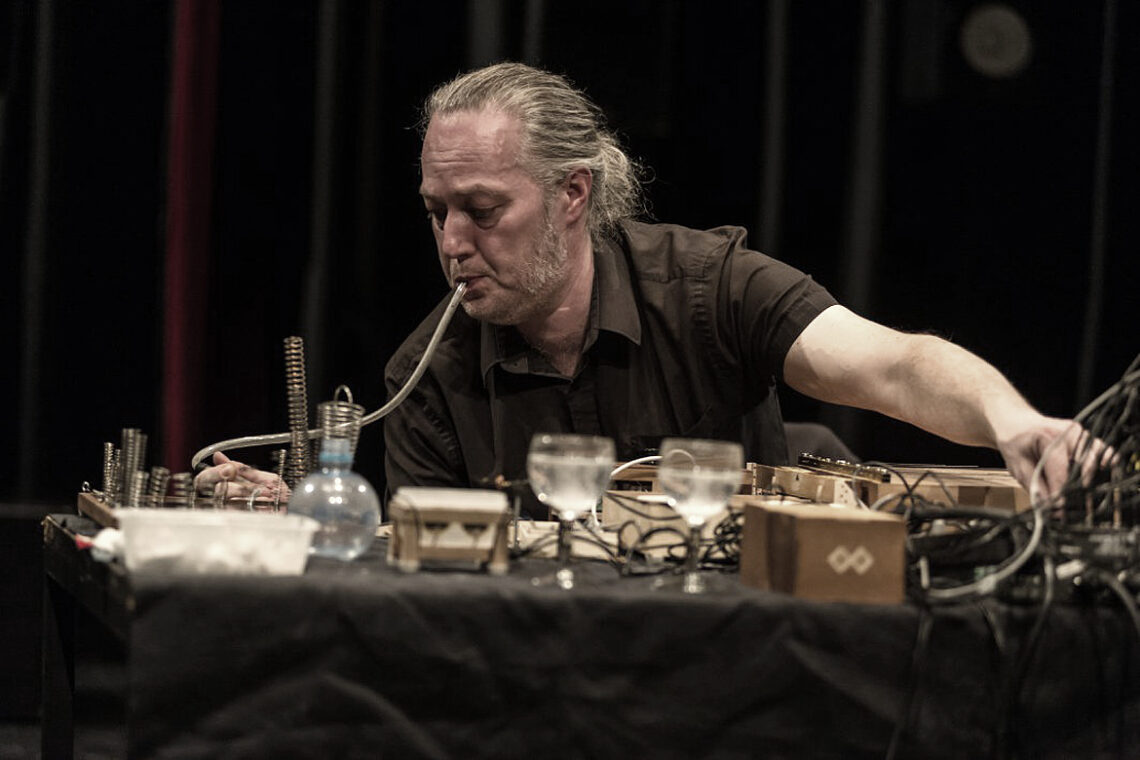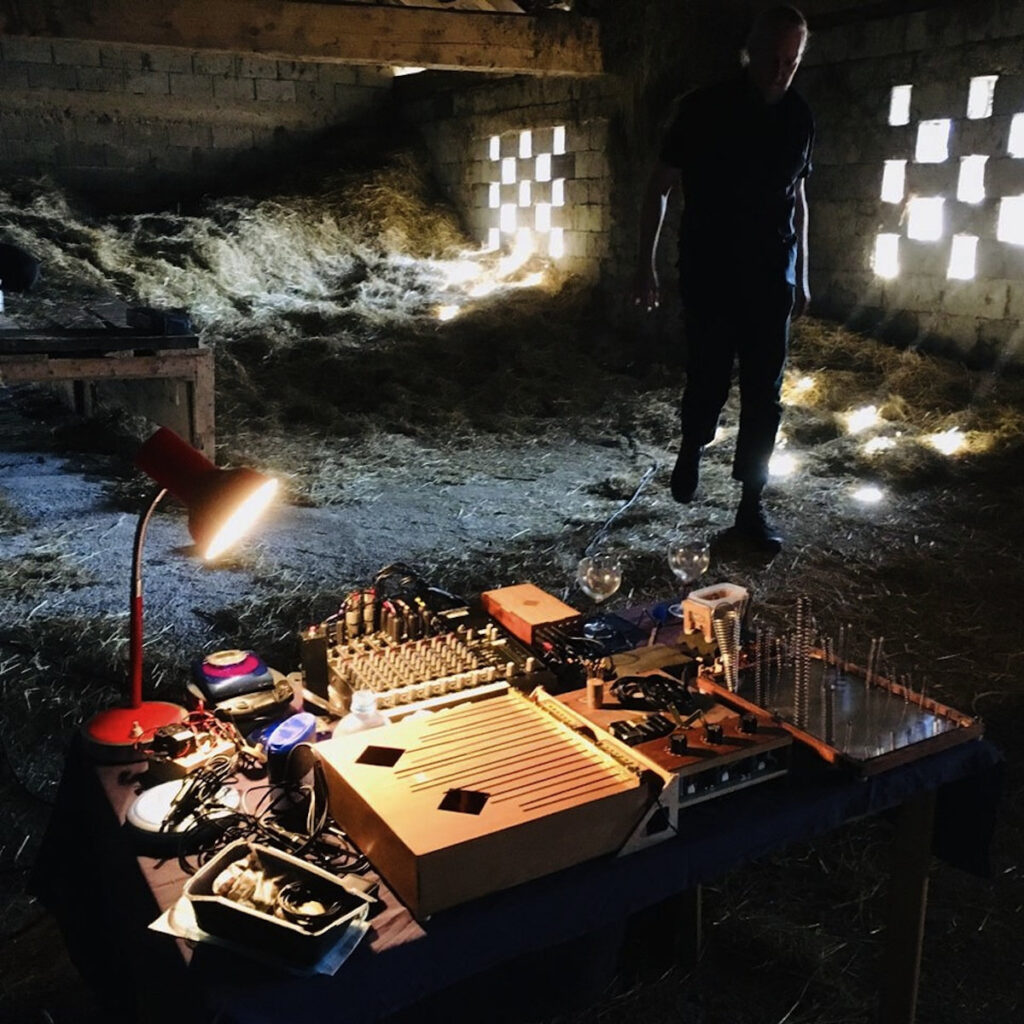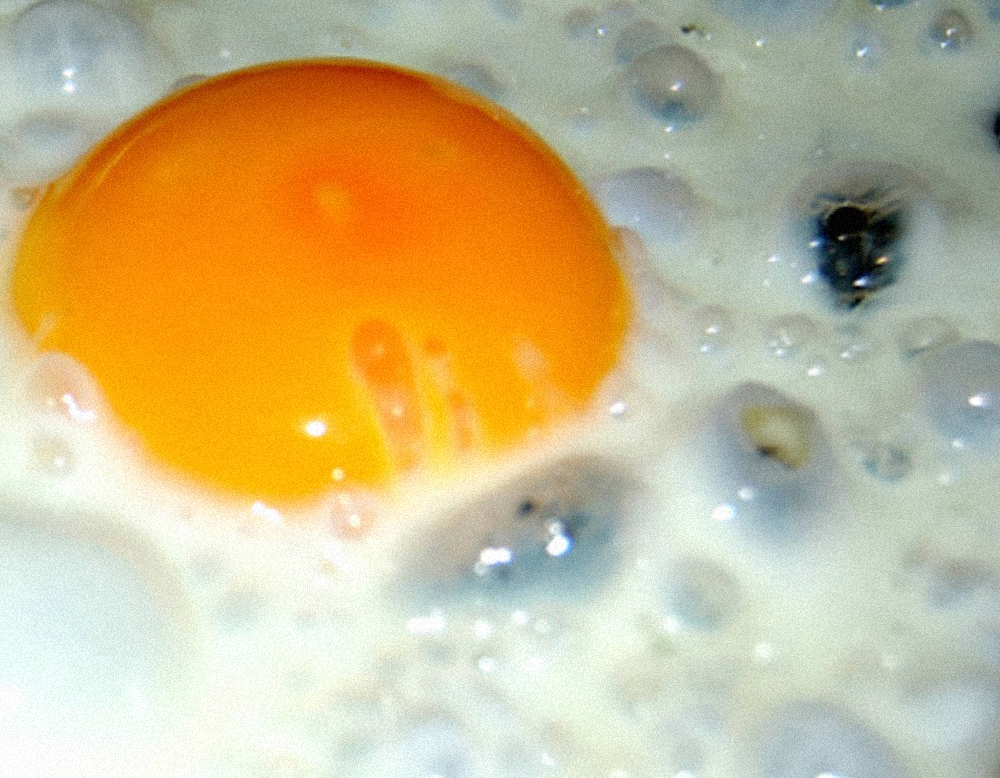Introduction (food sounds)
Cooking sounds resonate between the interest they draw in contemporary culture and the neglect in which we have been under-hearing them for many years. It is addressed by Tara Brabazon, a researcher in Cultural Studies, in her article The Sounds of Food: Defamiliarization and the Blinding of Taste.[1] She indicates that in food literature, the attention given to sound is reduced and approaches the acoustics of food as an “oral history” of the obsolete, unheard, undocumented geographies created around food, questioning the cultural hegemony of the visual, the tactile, and the gustatory. Anna Harris is an anthropologist studying topics related with well-being and nutrition who wrote the article The Hollow Knock and Other Sounds in Recipes,[2] where she examines how sound has been used to communicate and instruct the preparation of a group of food recipes including bread loafs.
“Knocking on a loaf of bread to see if it is ready is another one of those rare times the novice cook is explicitly instructed to listen to their cooking. Such a mysterious sound, this hollow knock! And one which divides the cookbook writers.”
-Anna Harris [2]
Harris encounters that historically, in cookbooks and other means of culinary communication and dissemination, the sense of hearing remains underappreciated and underexplored.
We can speculate that the cultural neglect of cooking sounds is linked to the architectural ideas that centuries ago isolated the kitchen and the dining table, a practice founded in exclusion and classism as noted by Estella Ciobanu.[3] This division might have helped disassociate cooking sounds with the dining experience, a problem explored by Gordon Matta-Clarke when he opened FOOD, a socially sensitive restaurant in Soho, NY, in 1971. The guests experienced food preparation as a multisensory performance, as Matta-Clarke wanted it to be sensed. In regard to the aesthetics of food sounds, the high levels of noise of kitchen extractors are another aspect that silences cooking sounds in our everyday culinary and gastronomic experiences, making it difficult to appreciate their aesthetic qualities in detail.[4]
However, we can say that today cooking sounds are more popular than ever. It becomes evident in the growing number of YouTube food videos presenting the sounds made during the preparation of recipes without dubbing. It surfaces as an alternative to the prevailing practice of having voice-over and music pushing back actual cooking sounds in which TV and internet programs have presented culinary videos for decades. For example, YouTube channels like T-BOX Japan, Goenventure, 1 Take Japan, and Japanese Noodles Udon Soba Osaka Nara, present food recipes using unprocessed and unmixed audio recordings, bringing to our attention the richness and lusciousness of cooking sounds. The Japanese origin of many of these channels, connects with the appeal of the sounds of tempura cooking in the culture of this country, a vital aspect in specialized restaurants where they play no ambient sounds with the purpose of focusing connoisseurs’ attention on the sounds of this preparation. We can also link the surge of audio-editing practice in culinary documentation emphasising cooking sounds, to the emergence of ASMR (Autonomous Sensory Meridian Response) videos which began to acquire relevance in popular culture in the 2010s. There, food sounds are often the main subject of countless programs on social media platforms. The timbres, textures and rhythms of frying, boiling and grilling preparations, together with the chewing sounds made when they are consumed, arouse and produce goose bumps and ticking sensations in internet video aficionados, an experience that gathers a large community worldwide. Sound researcher Brandon LaBelle encounters that ASMR sounds vulnerate and weaken the listener, which evidences the strategic role of sound as means of political resistance, he suggests.[5] LaBelle’s idea resonates when we consider that Palestinian artist and cook Fatima Kadumy, together with a large group of women, prepare food to resist the brutality of Israeli aggression. Some recipes she cooks, like Kousa Mahsh and hummus, produce sounds capable of arouse ASMR sensations.[6]

Another example of the current interest in food sounds is the 2022 comedy film Flux Gourmet,[7] directed by Peter Strickland. It focuses on the power struggles in the art world by depicting a sound art collective that uses live cooking sounds to create visceral and shocking performances. The sound crew of 20 artists between sound designers, recordists, editors and Foley artists, advanced powerful sonorities that oscillate between raw amplified sounds and heavy processing giving to the film a unique sensibility.

Also, in 2022, artist and filmmaker Luke Fowler dedicated two radio programs to food sound on Clyde Built Radio. In The Acoustics of Food, Fowler presented artworks by Lee Patterson, the subject of this interview, Ryoko Akama, chef Rosie Healey, David Toop, Iain Finlay Walsh, Ecka Mordecai and David Vélez, the author and interviewer of this article.
Context (cooking and sonic art)
Over the past century, many artists working with music and sound have explored food in their work. John Cage’s interest in edible mushrooms drew major attention in the mycologist community and his personal and unorthodox versions of classic sauces and soups were published in a column in Vogue magazine. Pierre Schaeffer recorded the sounds of banging cooking pans as part of his piece Étude Pathétique (1948);[8] and in a more urban-electronic context, Amon Tobin composed Kitchen Sink based on sounds entirely recorded in a kitchen and released on his acclaimed album Foley Room (2007).[9] Fast Forward is an English musician, who uses a variety of objects and devices to compose and perform music, including food and cooking utensils. He is well known for the conception of Feeding Frenzy, a concert where five cooks and five musicians perform for one hour and thirty minutes with the help of waiters that constantly bring fresh food to the tables. Fast Forward also conceived Musique a’ la Mode, a concert where kitchen utensils and cooking hardware are used to perform music.
Lee Patterson and Egg Fry #2
Lee Patterson is a British artist who has implemented kitchen objects, food ingredients and recipes in some of his sound artworks bringing forth rewarding and interesting results. Egg Fry #2, [10] is a Patterson piece documenting this preparation, which has become a crucial reference for those interested in food sounds, particularly from the standpoint of sonic arts.
Egg Fry #2 is avaliable for streaming and download here:
https://cathnor.bandcamp.com/album/egg-fry-2
The first thing that comes to my mind when I listen to Egg Fry #2 is: what am I listening to when I’m listening to the sound of an egg frying? What ideas, experiences, emotions, and affections are being triggered by this grainy, tactile, potentially goosebumps giving sounds? What parts of my psyche are touched by these oft unperceived sounds that emerge when we fry an egg? What happens when these sizzling sounds operate in the background underneath wandering thoughts, kitchen chat or the eventual sounding of the radio, TV, or phone? To approach this piece by Patterson, the analysis of the perception of sound has relevant things to say about the process of frying eggs, and here the work of experimental food psychologist Charles Spence is helpful. Spence has found correlation between sound and olfactory stimuli as part of our experience with food by conducting a series of experiments in which the environmental sounds and the colour of food affect its taste. Considering Spence’s theories, it is likely that Patterson’s synesthetic experience when he recorded Egg Fry #2 in his kitchen varied dramatically from what the spectator could experience. Initially, what is alluring to me is the aspects that Patterson finds interesting about these sounds. What made him decide to record and eventually publish them? What does he perceives when he is listening to eggs frying?
-David Vélez

Interview with Lee Patterson
David Vélez: Do you remember the first time you got interested in the sounds of cooking?
Lee Patterson: It’s hard to recall exactly, but sometime around 2004 – 2005. I was regularly frying and eating eggs for breakfast most mornings and I suppose it was around that time that I noticed how interesting they sounded to me. I also recall hearing the whistling of certain foods whilst in the cooker or grill, mostly sausages but I’ve been vegetarian for almost 30 years, so those memories must be from childhood.
DV: I assume that you cook. How important is it to listen, when you are preparing a recipe?
LP: I do like to cook/prepare my own food but strangely, I’m not often aware of any sounds made, other than perhaps water coming to boil in an open pan. I’m usually too busy preparing ingredients and trying not to chop off the tips of my fingers! That said, I do often find myself singing/harmonising with the drone from the oven fan or, very occasionally, the microwave oven.
DV: What is the most fascinating thing that you find in the sound of frying an egg?
LP: When I made those two recordings, it was the complexity, variation and development of the sounds. I was also very interested in how certain elements reminded me of electronic music (from Bernhard Günter – Autechre, etc.) as well as to animal or insect sounds. It was a complete and self-contained sound world (a soundscape in a pan as I, perhaps naïvely, termed back in 2009) and it was happening in my kitchen! The morphology of the sounds through time and how I could influence them by controlling the heat of the ring suggested to me a very simple compositional strategy, a framework within which the events could happen, a beginning and end with a dense middle section, a subtle yet complex crescendo.
DV: After listening to your piece Egg Fry #2 on Cathnor, it seems to me like a great example of the capacity of sound to detach itself from its causality in order to suggest “fictions” in the listener, and in this case, I felt like I was listening, in a very strange garden with buzzing insects, bubbling creeks and rain falling. When you listen to this piece, do you feel like you are listening to a fried egg? If not, what kind of scenarios does it suggest to you?
LP: I’m listening to it again right now! Most of the time it’s difficult for me not to hear it as a frying egg, but it does suggest to me underwater sound worlds, ‘alien’ communications, perhaps the (transcribed) infrasonic work of Felix Hess’s Air Pressure Fluctuations or some of the intricately edited/constructed works of Bernhard Günter. It is also quite similar to the sounds I obtain from chalk when immersed in water.
DV: You and Helena Gough used the sound offrying eggs and roasting seeds to create soundscapes for the “Cut and splice” episode of the BBC radio show Hear and Now dedicated to food and sound. How did these sounds work in order to fabricate a soundscape?
LP: (…) As I recall, Helena brought a number of recordings (porridge in a pan etc.). I don’t remember if these recordings were manipulated electronically as well (…) We worked out a sequence of events so the performance was at least in some parts, composed. Dave Hunt constructed some electret microphones for placement above the frying pan and at some point, I burnt nuts and seeds on my specially prepared contact microphones… Seth Cluett and Al Jones also assisted in the recording of this program.
DV: Other than fried eggs, are there other dishes that interest you from an aesthetic acoustic perspective?
LP: I want to make some hydrophone recordings of eggs placed in near boiling water, also chickpeas.
DV: Other than Helena, have you worked with other artists exploring food and cooking in music?
LP: No, but Helena and I were part of the Domestic Appliance Audio Research Society along with Benedict Drew, Karen Gwyer, Simon Swatman, Seth Cluett, Catriona Clayson and Al Jones. It was a short-lived project ‘The Domestic Appliance Audio Research Society was formed in 2007 with the express purpose of pursuing a non-exotic approach to field recording.’ We performed at Cut and Splice, Wiltons Music Hall, London, in June 2009.
DV: Are you interested in working and dialoguing with other artists that explore cooking in music?
LP: Matt Davis has made some great recordings of whistling and hissing vegetables and sausages under the grill, he also makes beautiful improvisations with electromagnetic reading devices and pick-ups. I’m interested in a variety of ‘non-traditional’ approaches to making music/sound, cooking being one of these – I’m always happy to hear about new methods and material. Peter Meanwell (now producer of Borealis Festival, Bergen) co-authored this book, along with a listening list…
DV: Do you see any relevance in studying the antecedents of the use of food in music
LP: Yes, I think that would be interesting. Certainly, there are strong correlations and connections in the use of food socially and music often plays a strong social role.

Reflections
The work of Lee Patterson with food sounds and his reflections on this practice establish a point of connection between the subjective experience that, as individuals, we can have with them and their artistic, cultural, and culinary significance. It pinpoints the complex sensorial elements that link sonic matter and listening with the gustatory, olfactory, tactile and visual stimuli we encounter in kitchens. Patterson connects the sound of frying eggs with a particular moment of the day and a specific time of his life when this dish was a recurrent element in his breakfast, as if these sounds today triggered memories associated with aromas, flavours and sounds, which reveal how the auditory experience in the kitchen is formed, between the possibility of reduction and the luscious olfactory stimuli working together amid a gradually growing desire. In Egg Fry #2, Patterson was cooking using his ears, making decisions based on acoustic aesthetics rather than merely preparing food and using a knob to create a structure supported in the intensity of the sizzling sounds created by the heat propagating through the pan, the oil, and the egg. It is interesting how Patterson likes to subtly tune in to the baking sounds in his kitchen with his voice as if he were an accomplice of the mechanisms of ovens that make this place warm and vibrant full of musical possibility. The kitchen here is approached as a sounding environment bursting in poetry where the magic in our everyday life resonates with great vibrance and evocative power. The suggestive possibilities of environmental cooking sounds are vast, the freedom and malleability that they award the listener to shape them in their imagination, provide them with emotional significance and multisensory dimensionality. It reveals essential aspects about our psyche and desires, allowing the emergence of elements related to the construction of our identity.
_____________________________________
[1] Brabazon, T. (2017) The Sounds of Food: Defamiliarization and the Blinding of Taste.
Journal of Sound Studies.
[2] Harris, A. (2015) The Hollow Knock and Other Sounds in Recipes.
Gastronomica: The Journal of Critical Food Studies.
[3] Ciobanu, E. (2019) Kitchen and Other Tables to Think With. Universitatea Ovidius Constanţa.
[4] Vélez, D. (2021)Sonic Art and the Acoustics of Food. University of Huddersfield
[5] LaBelle, B. (2018) Sonic Agency. Goldsmiths Press.
[6] Vélez, D. (2021) The illustrated and sonic cookbook of food as means of resistance.
The Making Space.
[7] Strickland, P. (2022) Flux Gourmet.
[8] Schaeffer, P. (1948) Étude Pathétique. INA-GRM.
[9] Tobin, A. (1965) Foley Room. Ninja Tune.
[10] Patterson, L. (2012) Egg Fry #2. Cathnor.

